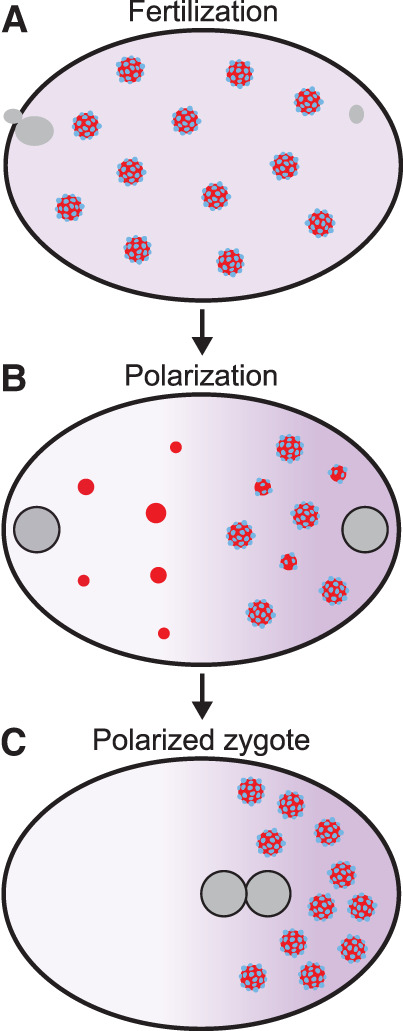Figure 2.

P granules are condensates that undergo localized dissolution and condensation in the C. elegans zygote. P granules consist of a central liquid core (containing dozens of proteins; red) covered by solid-like clusters (blue) adsorbed to the interface of the liquid core. All P granule components exchange between the granules and cytoplasm. The solid clusters recruit the kinase DYRK3, which accelerates P granule/cytoplasm exchange. The solid clusters also lower surface tension to stabilize P granules against coarsening (“Pickering effect”). (A) In unpolarized zygotes, P granules distribute throughout the uniformly saturated cytoplasm. (B) During polarization, P granules dissolve in the anterior cytoplasm and grow in the posterior cytoplasm in response to two spatial inputs: (1) A subset of P granule components enrich in the posterior, forming a saturation gradient across the cytoplasm, and (2) interfacial clusters are depleted from anterior granules and enriched on posterior granules by an unknown mechanism, preferentially stabilizing posterior granules. (C) In polarized zygotes, P granules are only found in the supersaturated environment of the posterior cytoplasm.
